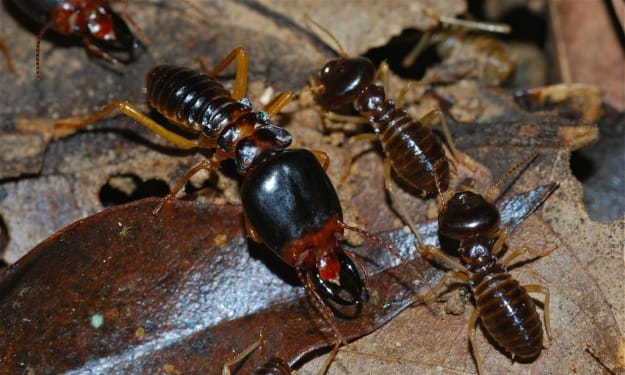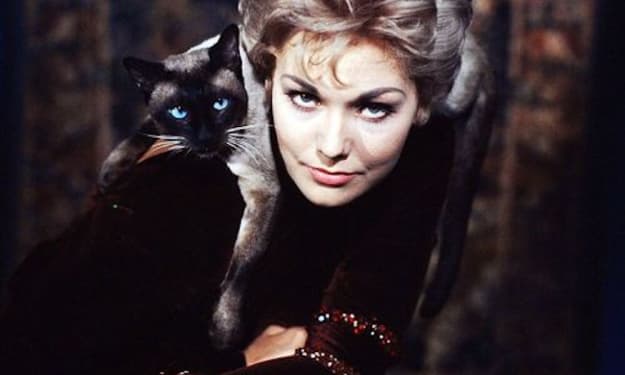Can a Dog Get a Cat Pregnant?
Understanding the Reproductive Compatibility Between Dogs and Cats

No, a dog cannot get a cat pregnant. Dogs and cats belong to different species, each with their own unique reproductive system. While they may share some similarities in terms of mating behaviors, their biological differences prevent successful reproduction between the two species.
Dogs have a reproductive system designed to mate with other canines, while cats have their own specific reproductive mechanisms for mating with other felines. The anatomical and physiological disparities between dogs and cats make it impossible for them to produce offspring together naturally.
In this article we are going to dig deeper into this matter so hop on the ride.
Biological Differences between Cats and Dogs
Cats and dogs exhibit distinct biological differences. Cats belong to the Felidae family, while dogs belong to the Canidae family. These differences are reflected in their physical characteristics and reproductive systems. For instance, cats have retractable claws, a more flexible skeletal structure, and a keen sense of balance, which enables them to be agile climbers.
On the other hand, dogs have non-retractable claws, a more robust skeletal structure suitable for running and endurance, and a stronger sense of smell compared to cats. Additionally, cats are obligate carnivores, meaning they require a diet primarily consisting of meat, while dogs are omnivores, capable of digesting a wider variety of foods.
Reproductive Systems and Mating Behaviors
Cats and dogs also have distinct reproductive systems and mating behaviors. Female cats typically experience an estrus cycle, commonly known as "heat," during which they are receptive to mating. This cycle is characterized by hormonal changes and the release of eggs, which can result in pregnancy if fertilized.
In contrast, female dogs undergo a similar reproductive cycle called estrus, but they do not experience a visible, outward sign of ovulation as cats do. Instead, dogs display behavioral changes and may exhibit physical signs such as swelling of the vulva. Mating behaviors also differ between cats and dogs.
Cats are induced ovulators, meaning they ovulate only after mating occurs. Dogs, on the other hand, are not induced ovulators and can ovulate regardless of mating.
Additionally, cats are known for their vocalization and unique courtship rituals during mating, while dogs rely more on physical proximity, olfactory cues, and mounting behavior.
Reproductive Compatibility
Reproductive compatibility refers to the ability of individuals from different species to successfully reproduce and produce fertile offspring. It is important to understand that dogs and cats belong to different species with distinct genetic makeups and reproductive systems. Each species has evolved unique reproductive mechanisms that are tailored to their specific biology and ensure successful reproduction within their own species.
Due to these biological differences, dogs and cats are not reproductively compatible. Their reproductive systems, including the structure of their reproductive organs and the mechanisms governing fertilization and embryonic development, are not compatible with each other.
As a result, dogs and cats are unable to produce offspring naturally through sexual reproduction.
Genetic and biological limitations preventing natural reproduction
The genetic and biological differences between dogs and cats pose significant obstacles to natural reproduction. The genetic makeup of each species determines the compatibility of their reproductive systems, including the compatibility of sperm and eggs and the ability of embryos to develop properly. Dogs have 78 chromosomes, while cats have 38 chromosomes, making it challenging for their genetic material to align and produce viable offspring.
Furthermore, the reproductive organs of dogs and cats have distinct structures and mechanisms, preventing the physical act of mating and successful fertilization. Therefore, the combination of genetic, physiological, and behavioral factors establishes the clear inability of dogs and cats to produce offspring naturally.
Hybridization in the Context of Animals
Hybridization in the context of animals refers to the mating and reproduction between individuals of different species, resulting in offspring that inherit traits from both parent species. It occurs when reproductive barriers between species are overcome, either naturally or through human intervention.
Hybridization can lead to the formation of unique hybrids with characteristics that differ from both parent species.
Examples of Hybrid Animals
Hybridization has been observed in various animal species, resulting in fascinating hybrid offspring. Some notable examples include ligers (a hybrid between a male lion and a female tiger) and mules (a hybrid between a male donkey and a female horse).
These hybrid animals often possess a combination of physical traits from both parent species, showcasing the genetic diversity that can arise through hybridization.
Dog Hybrids
Dog hybridization refers to the breeding of dogs with other canines, such as wolf-dog hybrids. This practice has gained attention due to the desire for unique and exotic pets. When a dog mates with a wolf, it is possible to produce a hybrid offspring known as a wolf-dog.
These hybrids exhibit a combination of traits from both dogs and wolves, including physical characteristics, behavior, and instincts. The possibilities of dog hybridization extend beyond wolves and can include other canid species.
However, it is essential to approach dog hybridization responsibly, as it raises ethical concerns and may have legal restrictions in some regions.
Dog hybridization can lead to various outcomes depending on the specific breeds involved. The resulting hybrid offspring may inherit traits from both parent species, resulting in a unique combination. For example, wolf-dog hybrids may exhibit a mix of wolf-like physical features and dog-like social behavior.
Cat Hybrids
Cat hybrids, such as lion-tiger hybrids, have been a subject of interest and fascination. In certain controlled environments, it is possible to hybridize different feline species. One notable example is the liger, a hybrid offspring of a male lion and a female tiger.
This unique crossbreeding is made possible due to the close genetic relationship between lions (Panthera leo) and tigers (Panthera tigris). However, it's important to note that such hybridizations typically occur in captivity and are not a natural occurrence in the wild.
Possibilities and Outcomes of Cat Hybridization
When cat hybridization does occur, it can result in fascinating outcomes. For instance, ligers often display traits inherited from both parent species, such as a lion's mane and a tiger's stripes.
However, it's important to acknowledge that hybridization between different feline species is relatively rare and occurs under specific circumstances. The genetic and biological differences between various feline species usually act as barriers to natural hybridization.
While cat hybrids like ligers have captured public interest, they are not a common occurrence in nature.
Dog Mounting a Cat
Dog-mounting behavior towards cats can occur in certain situations. It is important to understand that mounting is a natural behavior for dogs, and it may not be specific to cats alone. Dogs mount for various reasons, such as asserting dominance, displaying social hierarchy, or expressing sexual frustration. When a dog mounts a cat, it is often a sign of the dog attempting to assert dominance over the cat or establish social control.
However, it is crucial to note that mounting behavior does not necessarily indicate sexual intent or the possibility of impregnation. Mounting can occur between animals of the same sex or even inanimate objects, and it is primarily a behavioral display rather than a reproductive act.
Explanation of the reasons behind such behavior
The behavior of dogs mounting cats can be attributed to dominance or sexual frustration. Dogs are social animals with hierarchical structures, and mounting is one way for them to establish dominance or assert their social status. By mounting a cat, a dog may be attempting to display dominance and establish control over the cat in their shared environment.
Additionally, mounting can also occur due to sexual frustration, particularly in male dogs that have not been neutered. Unneutered male dogs may exhibit mounting behavior towards cats as a result of their natural mating instincts.
However, it is important to emphasize that mounting behavior towards cats does not guarantee impregnation, as successful reproduction between different species is biologically unlikely.
Unnatural Reproductive Techniques
Artificial insemination is a reproductive technique that involves the deliberate introduction of sperm into a female's reproductive tract without natural mating. In the context of hybridization, artificial insemination can be used to create hybrids in controlled environments.
By collecting sperm from a male dog and introducing it into the reproductive system of a female cat, it is possible to achieve fertilization and the development of hybrid embryos. This technique allows for controlled hybridization experiments and the study of resulting offspring.
Ethical Considerations and Limitations of Unnatural Reproductive Techniques
While artificial insemination and genetic engineering can create hybrids in controlled environments, it is essential to consider the ethical implications of such techniques. The manipulation of reproductive processes raises questions regarding the welfare and consent of the animals involved.
Additionally, the long-term health and well-being of hybrid offspring may be uncertain, as their genetic makeup combines traits from different species.
Moreover, there are limitations to these techniques, such as the requirement for specialized expertise, availability of suitable facilities, and potential costs involved. These factors necessitate careful consideration and ethical evaluation before engaging in unnatural reproductive techniques.
Conclusion
In conclusion, dogs cannot impregnate cats naturally due to their biological and genetic differences as separate species. Despite dogs sometimes exhibiting mounting behavior towards cats, this does not result in successful reproduction or the birth of hybrid offspring. The distinct reproductive systems of dogs and cats prevent them from being compatible for natural reproduction.
Further research on the topic is encouraged to enhance our scientific understanding. By studying the reproductive compatibility between different species, we can gain valuable insights into the barriers and incompatibilities that exist in interspecies reproduction.
Additionally, investigating unnatural reproductive techniques such as artificial insemination and genetic engineering can help us explore the possibilities and limitations of creating hybrids in controlled environments.
About the Creator
Typical Dude
Just your average guy navigating life's twists and turns. AI Enthusiast, good vibes, and terrible jokes. Stumbling through this adventure called existence. 🌍✌️






Comments (1)
amazing scientific information.